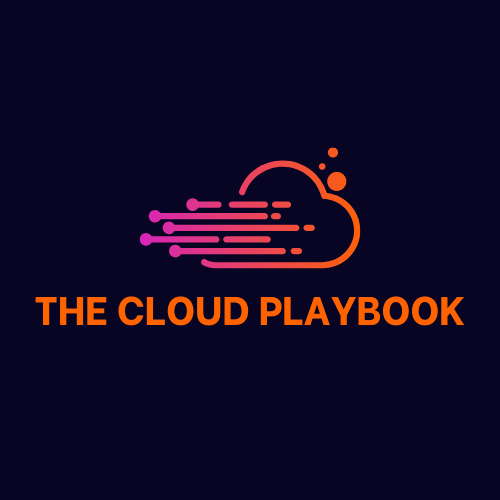TCP #91: Beginner’s Guide to Bedrock AgentCore
Build Custom AI Agents That Actually Work
You can also read my newsletters from the Substack mobile app and be notified when a new issue is available.
Everyone’s racing to ship AI agents. Most are building with heavyweight frameworks that promise simplicity but deliver complexity.
Meanwhile, AWS Bedrock AgentCore sits quietly in the corner, a primitive so powerful that once you understand it, you’ll wonder why you ever bothered with the alternatives.
This isn’t another “what is AgentCore” explainer.
This is the practical guide I wish I had when I started: the gotchas, the patterns, and the real implementation details that separate working agents from production disasters.
But before we begin, I have something special for you today.
The single most powerful career move you can make in 2025:
(While everyone else worries about AI)
Becoming a Digital Writer.
There has never been a better time in history to be a writer—as long as you’re writing on the internet.
Writing online is how I’ve:
Grown The Cloud Playbook newsletter from 0 → 3470 subscribers.
Landed Sponsorship deals for The Cloud Playbook newsletter.
Published successful 4.7-star-rated online courses on Udemy.
Grown my social media presence and personal brand on X and LinkedIn.
The internet’s leading Digital Writers, Dickie Bush and Nicolas Cole, are revealing the frameworks they’ve used to train over 10,000 writers in their Digital Writing program, Ship 30 for 30:
• Why you should build a daily writing habit in 2025
• The best places to write online this year (LinkedIn? 𝕏? Substack?)
• How to generate your first 30 content ideas
And they’re giving it away for free.
Click the link to get started.
Understanding AgentCore vs Bedrock Agents
Let’s clear this up immediately because the naming is confusing.
Bedrock Agents are fully managed, out-of-the-box solutions. You define tools, write some instructions, and AWS handles orchestration, memory, and execution. Great for standard use cases, terrible when you need control.
Bedrock AgentCore is the underlying primitive. It’s the orchestration engine that powers Bedrock Agents, exposed as an API you can program against directly. You get granular control over every reasoning step, streaming responses, and the ability to build workflows that actually match your business logic.
Think of it like React vs vanilla JavaScript. Agents give you components; AgentCore gives you the DOM.
Why AgentCore Matters for Real Applications
Standard agent frameworks force you into their opinionated workflow.
Need human approval before database writes?
Want to log every reasoning step for compliance?
Building hybrid automation where AI handles 80% and humans catch the edge cases?
Traditional frameworks make these scenarios painful. AgentCore makes them natural.
The real power shows up in production environments where:
You need custom approval flows before actions execute
Compliance requires detailed audit trails of agent reasoning
Business rules must be injected at specific points in the conversation
You’re building specialized reasoning chains for domain-specific problems
Streaming responses improve user experience significantly
The Core Orchestration Loop
Here’s what actually happens when an AgentCore agent processes input:
Input Reception: Agent receives user query and current session context
Orchestration: Foundation model processes input against your instructions and available tools
Decision Point: Model chooses to either respond directly OR invoke a tool
Tool Execution: If tool is chosen, your Lambda/API executes with the provided parameters
Result Integration: Tool response feeds back to the orchestrator
Iteration: Loop continues until the model decides the conversation turn is complete
You control this entire flow programmatically. That’s the difference.
Setting Up Your First AgentCore Agent
The setup is deceptively simple. Don’t let that fool you—the details matter.
Agent Configuration:
Create an agent with a foundation model (Claude recommended for reasoning quality)
Define instruction that shapes reasoning behavior
Register tools as action groups pointing to Lambda functions or APIs
Critical Detail: The sessionId parameter isn’t optional. It’s how AgentCore maintains conversation context across invocations. Every call with the same sessionId shares memory. Different sessionId = fresh conversation. Plan your session management strategy before writing code.
Tool Definition Best Practices: Your tool schemas need semantic clarity. The foundation model reads your function names and descriptions to decide when to use them. Poor naming kills performance.
Good: get_customer_order_history, cancel_subscription, search_knowledge_base
Bad: function_1, process_data, helper_method
The model relies on semantic understanding. Help it help you.
Streaming Implementation (The Part Everyone Gets Wrong)
AgentCore supports streaming, which is essential for responsive UX. But the implementation has gotchas.
Streaming events arrive as chunks containing different event types:
chunkevents carry actual response bytestraceevents show reasoning stepsreturnControlevents signal tool invocation needs
Common Mistake: Printing chunks directly to output. The bytes are base64-encoded and might contain partial JSON. You need proper buffering and parsing.
Implementation Pattern:
Buffer incoming chunk bytes
Track conversation state separately
Parse complete events before acting
Handle partial messages gracefully
Implement timeout logic for long-running operations
The difference between a janky demo and a production-ready agent often lives in streaming implementation quality.
Tool Execution Pattern That Works
Your Lambda functions (or API endpoints) are where business logic lives. Structure matters.
Input: You receive inputText (user’s request context) and parameters (model-extracted values)
Output: Must return structured JSON with clear success/failure indication
Critical Pattern: Always include error context in your responses. When tools fail, the agent uses your error message to recover or reroute. Generic errors produce generic agent responses. Specific errors enable intelligent recovery.
Example: Instead of “Database error”, return “Unable to retrieve order history for customer ID 12345. Customer may not exist or may have a restricted access level.”
The foundation model reads your error responses and adjusts its approach. Give it information it can act on.
Memory Management (The Production Killer)
Here’s what bites people in production: AgentCore doesn’t auto-persist sessions.
You’re responsible for:
Session State: Store in DynamoDB with sessionId as key
Conversation History: Archive to S3 for analysis and recovery
TTL Policies: Implement automatic cleanup to avoid cost bloat
Architecture Pattern:
DynamoDB table with sessionId partition key
TTL attribute set to expire after a reasonable period of inactivity (24-72 hours typical)
Lambda trigger on DynamoDB streams to archive expired sessions to S3
Versioning on S3 bucket for compliance requirements
Set this infrastructure up BEFORE launching. Retrofitting session management into production is painful.
Prompt Engineering for AgentCore
Your agent's instructions are more important than you think. It defines reasoning quality, tool usage patterns, and response characteristics.
Be Specific About:
Which tools to prefer in which scenarios
When to ask clarifying questions vs making assumptions
How to handle ambiguous requests
Expected response format and tone
Error handling behavior
Example Instruction Structure:
You are a customer support agent with access to order history, subscription management, and knowledge base tools.
When customers ask about orders: Always fetch complete history before responding.
When customers want to cancel: Confirm intent and explain consequences before invoking cancellation tool.
When information is ambiguous: Ask one specific clarifying question rather than assuming.
Response format: Professional but friendly. Acknowledge frustration when present. Provide actionable next steps.
Vague instructions produce inconsistent agents. Precise instructions produce reliable automation.
Advanced Pattern: Agent Chaining
The most powerful AgentCore pattern: Chain multiple specialized agents for complex workflows.
Example Architecture:
Research Agent: Gathers information from multiple sources
Analysis Agent: Processes gathered data with domain-specific reasoning
Report Agent: Formats findings into actionable output
Each agent specialized, each streaming, each controllable. The orchestration layer between them handles routing, error recovery, and state management.
This mirrors how you’d structure a team of specialists. Different expertise, coordinated execution, clear handoffs.
Cost Optimization Strategies
Agents can burn budget fast if you’re not careful. Key optimization points:
Schema Caching: Don’t send tool schemas with every invocation. Cache them and reference.
Session State Management: Use sessionState parameter to reduce the context window size. Only include relevant history.
Token Limits: Set maxTokens aggressively. Don’t let agents ramble.
Trace Monitoring: Watch trace events to identify expensive reasoning loops. Some patterns indicate the model is confused and spinning.
Tool Call Batching: When possible, design tools that can handle batch operations rather than forcing sequential calls.
Monitor your CloudWatch metrics. Cost surprises in production are never fun.
When NOT to Use AgentCore
Match tool to job. AgentCore isn’t always the answer.
Use Converse API Instead When:
Simple Q&A with no tool calling
Static knowledge retrieval
No need for multi-turn conversation context
Use Full Bedrock Agents Instead When:
Standard automation patterns fit your use case
You don’t need custom orchestration logic
Team lacks capacity for custom implementation
Use Neither When:
Simple API calls suffice
No need for reasoning or tool selection
Latency requirements under 100ms
AgentCore adds orchestration complexity. Only add complexity when it solves real problems.
Common Implementation Mistakes
Over-relying on Tool Descriptions: Models read descriptions, but poor function naming still kills performance. Semantic clarity in names matters more than verbose descriptions.
Ignoring Session Boundaries: Not all conversations should share sessions. Customer support chat = per-customer session. Research task = per-task session. Plan your session scoping strategy.
Insufficient Error Handling: Tool errors, timeout errors, model errors. Production agents hit them all. Your error handling strategy determines reliability.
Logging Blind Spots: Trace events contain gold for debugging. If you’re not capturing and analyzing them, you’re flying blind.
Premature Optimization: Start with simple orchestration. Add complexity only when you understand where bottlenecks actually appear.
The Competitive Edge
While others ship generic agents wrapped in flashy UIs, you’re building:
Custom reasoning optimized for your specific domain
Hybrid automation with human oversight where it matters
Workflows that actually map to how your business operates
Agents that handle edge cases gracefully instead of failing mysteriously
That’s how you ship AI that delivers real business value, not just impressive demos.
Final Thoughts
Start simple. Build a single-tool agent. Add streaming. Implement proper session management. Then expand.
The practitioners shipping valuable AI agents aren’t using more sophisticated tools. They’re using flexible primitives with a deep understanding. AgentCore is one of those primitives.
The frameworks will keep evolving. The underlying patterns won’t. Learn the primitives. Master the patterns. Build things that work.
Whenever you’re ready, there are 3 ways I can help you:
Want to build automated, AI-powered businesses without quitting your job? Join my free community: The AI Business Playbook
Free guides and helpful resources: https://thecloudplaybook.gumroad.com/
Get certified as an AWS AI Practitioner in 2025. Sign up today to elevate your cloud skills. (link)
That’s it for today!
Did you enjoy this newsletter issue?
Share with your friends, colleagues, and your favorite social media platform.
Until next week — Amrut
Get in touch
You can find me on LinkedIn or X.
If you would like to request a topic to read, please feel free to contact me directly via LinkedIn or X.



